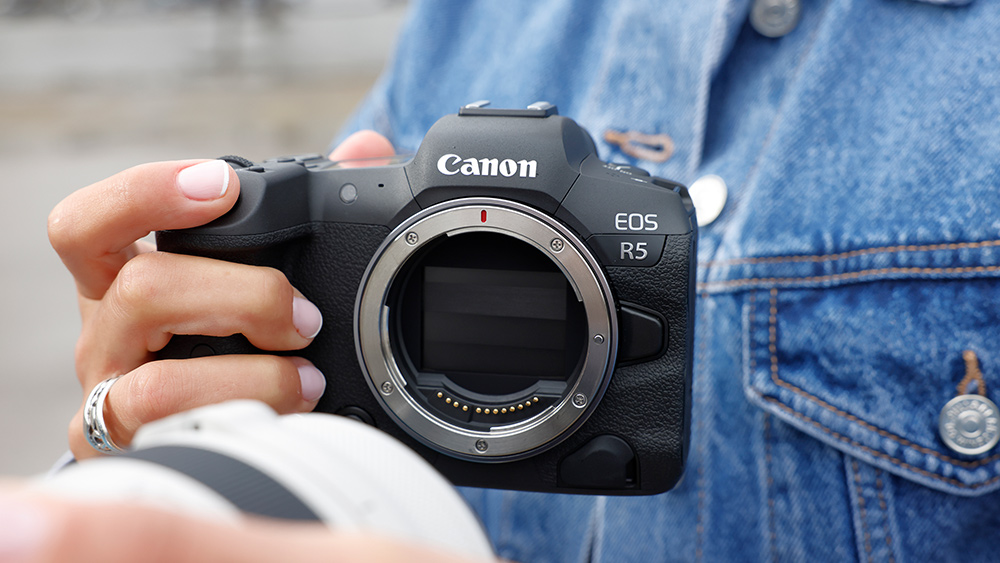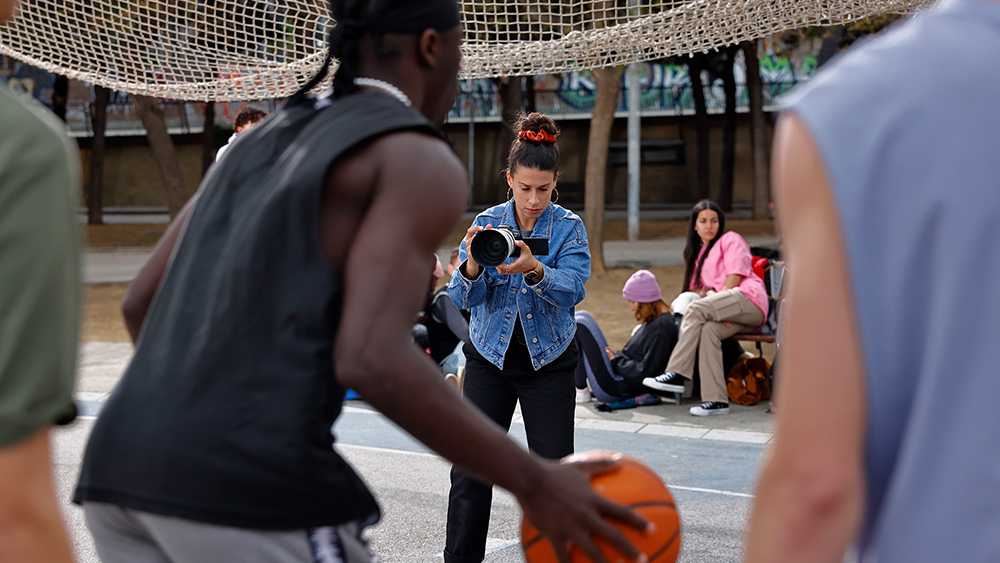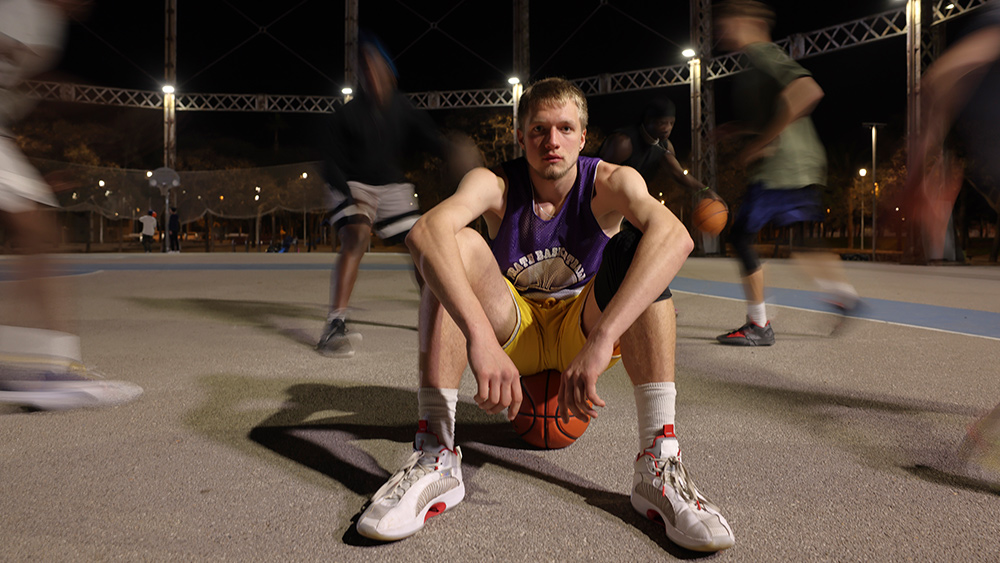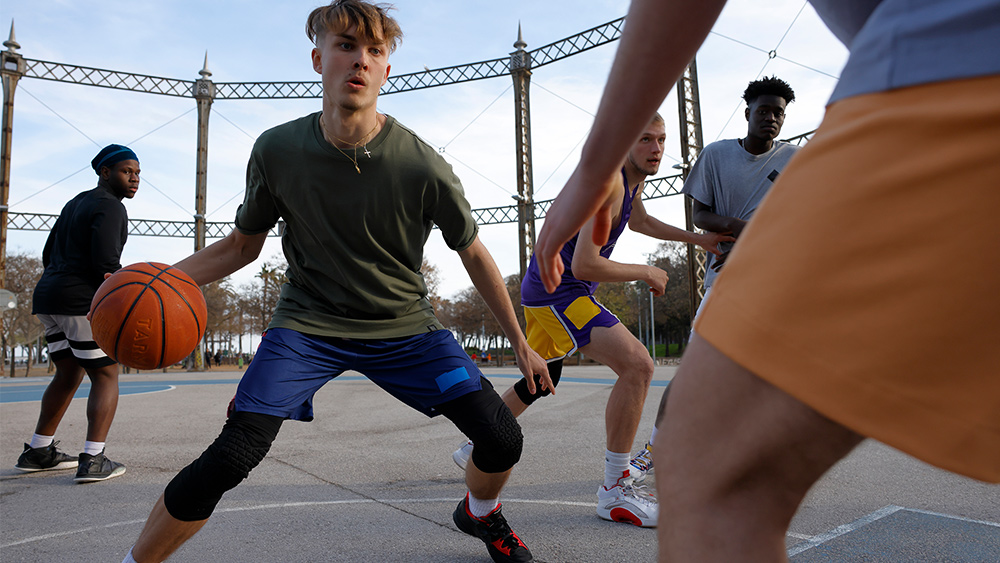Focus on your subject with Canon’s EOS R System
When you’re shooting a new subject, you want to be able to focus on getting the strongest set of images possible, not worry about your kit. So when given the opportunity to capture a fast-paced streetball game in Barcelona, Spain, Raisa Abal turned to the Canon EOS R5, an R System camera boasting the innovative RF mount, ergonomic handling, up to 8-stops of image stabilisation and excellent AF to boot. Here’s how it helped Abal to focus on her subject, and how it could help you too.
RF mount and lens optics

The Canon EOS R5 has received top marks for its full-frame performance (we named it Best Camera in the Future Tech Awards). However, many of the camera’s capabilities wouldn't be possible without the innovative RF mount – a key feature of the EOS R System and one that has unlocked Canon’s ability to make smaller, lighter, faster and more intelligent cameras.
The RF mount design features more electronic contacts than the EF mount, allowing for richer and faster communication between the lens and camera – and, in turn, brilliantly useful features such as the customisable control ring.
RF lenses might share the same wide 54mm diameter as Canon’s EF lenses, but the mirrorless design reduces the distance between the rear element of the lens and the focal plane of the camera sensor. This has enabled Canon engineers to create optics with larger apertures for a given focal length, while improving critical image sharpness from corner to corner.
Since launching in 2018, the number of RF lenses has grown rapidly from a family of four to 30 (and counting). The RF lens roadmap now features an enormous range of lenses for amateur and pro imagemakers, from professional standard zoom lenses such as the Canon RF 24-70mm F2.8L IS USM to mega-telephotos like the Canon RF 1200mm F8L IS USM. Abal opted for the RF 24-70mm F2.8L IS USM and the RF 70-200mm F2.8L IS USM to use on the court, and she found she lost no time switching lenses during the fast-paced shoot.
Ergonomics

Because EOS R System cameras are designed to be smaller and lighter than their DSLR counterparts, they’re ideal for modern content creators like Abal, who wanted to be able to shoot all day without using a tripod. As a quick comparison, the EOS R5 weighs just 738g with a card and battery. Abal said she found using it similar to her EOS 5D Mark II but said it was more comfortable for all-day use.
The EOS R5 is more portable and comfortable for handheld shooting, but it’s still robust. The weather-resistant magnesium construction allows photographers to continue confidently in all conditions – maintaining creative flow even when the rain flows down. EOS R System cameras also feature ergonomic and intuitive button placement and full customisation of menus, buttons and control rings, Eye Detection AF and more. “The camera body and lenses were super solid,” Abal says.
Image stabilisation

Canon’s image stabilisation (IS) features are constantly evolving. Before the Canon EOS R5 was released, many Canon lenses were already equipped with an Optical Image Stabiliser to prevent camera shake during handheld shooting and deliver sharper shots.
But with the release of the EOS R5, the camera’s 5-axis In-body Image Stabiliser (IBIS) works in tandem with RF lenses to provide up to an impressive 8-stops of protection against camera shake (8-stops on compatible lenses). The technology means sharper stills and steadier video footage than ever before, whether you want to ditch the tripod or continue to shoot as the light levels drop.
Autofocus excellence

There are several different types of AF systems used in cameras today, but Canon's Dual Pixel CMOS AF II is arguably at the front of the pack for speed and performance. It takes its name from the fact that every pixel on the camera’s sensor has two independent light-sensitive photodiodes, each capable of working together or individually.
By essentially comparing 'left' and 'right' images on each pixel to work out the correct focus, the AF on Canon’s EOS R System is not only more accurate than that on DSLRs that use separate phase detection, but it’s also fast and responsive for shooting video on mirrorless cameras such as the EOS R5 – and that extends to Eye Detection AF too. "I chose Face Tracking AF; it was just spectacular,” Abal says.
For more about the Canon EOS R System, visit www.canon-europe.com/cameras/eos-r-system
Daily design news, reviews, how-tos and more, as picked by the editors.

Joe is a regular freelance journalist and editor at Creative Bloq. He writes news, features and buying guides and keeps track of the best equipment and software for creatives, from video editing programs to monitors and accessories. A veteran news writer and photographer, he now works as a project manager at the London and Buenos Aires-based design, production and branding agency Hermana Creatives. There he manages a team of designers, photographers and video editors who specialise in producing visual content and design assets for the hospitality sector. He also dances Argentine tango.
